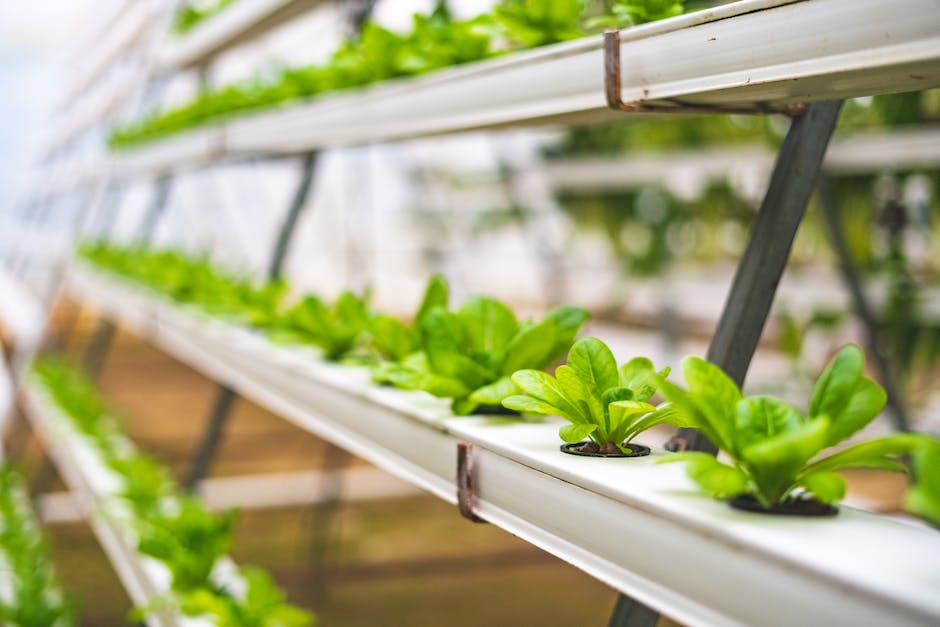Who Discovered Hydroponic Farming
Hydroponic farming, a revolutionary method of growing plants without soil, has gained significant popularity in recent years. This innovative technique has sparked interest and curiosity among farmers, garden enthusiasts, and researchers alike. But who is behind the discovery of hydroponic farming? Let’s delve into the intriguing history of hydroponics and explore the pioneers who paved the way for this groundbreaking agricultural practice.
Hydroponics, derived from the Greek words “hydro” meaning water and “ponos” meaning labor, involves cultivating plants in nutrient-rich water solutions instead of traditional soil-based methods. This modern agricultural approach offers numerous advantages, such as increased crop yields, water efficiency, ideal growing conditions, and the ability to grow food in unconventional environments.
While hydroponics has gained popularity in recent decades due to its numerous benefits, the concept itself is not new. The origin of hydroponic farming can be traced back to ancient civilizations, where some cultures experimented with growing plants in water-based systems.
One of the earliest known examples of hydroponics dates back to the ancient Babylonians, who used the Hanging Gardens of Babylon as a form of vertical hydroponic garden. These majestic gardens, one of the Seven Wonders of the Ancient World, showcased the Babylonians’ understanding of water management and cultivation techniques.
In the 17th century, Sir Francis Bacon, an English philosopher and scientist, conducted experiments with water-based cultivation methods. He proposed that plants could absorb nutrients directly from water, without the need for soil. Although Bacon’s theories were ahead of his time and not widely adopted, they laid the foundation for modern hydroponic practices.
The true breakthrough in hydroponic farming, however, occurred in the mid-19th century when German botanists Julius von Sachs and Wilhelm Knop conducted extensive research on plant nutrition and developed nutrient solutions for hydroponic cultivation. Their findings revolutionized agricultural practices by proving that plants could thrive in controlled environments without relying on soil alone.
Fast forward to the 20th century, researchers like Dr. William Frederick Gericke, an American professor at the University of California, further advanced the field of hydroponics. Gericke’s experiments with growing plants using mineral nutrient solutions in a water solvent brought hydroponics into mainstream agriculture.
Since then, hydroponic farming has continued to evolve and gain momentum worldwide. With advancements in technology and increased awareness of the environmental impact of conventional agriculture, more and more farmers and growers are adopting hydroponic systems to ensure sustainable food production.
As we explore the exciting world of hydroponics, it’s important to acknowledge the pioneers who laid the groundwork for this revolutionary farming method. Their tireless efforts and groundbreaking discoveries have changed the way we grow crops and offer a promising solution to address future food security challenges.
Definition and explanation of hydroponics

Hydroponic farming is an innovative method of growing plants without soil, where the plants receive essential nutrients through a water-based nutrient solution. This technique has gained popularity in recent years as a sustainable and efficient farming practice.
In traditional soil-based farming, plants obtain their nutrients from the soil. However, hydroponics eliminates the need for soil altogether, providing the perfect environment for plant growth. Instead, a carefully balanced solution of water and nutrients is used to nourish the plants directly.
In hydroponics, plants are typically grown in controlled environments such as greenhouses or indoor setups. They are supported by inert materials like perlite, vermiculite, or coconut coir, which provide stability and an anchoring system for the roots. The nutrient-rich water is circulated through the growing medium, delivering the necessary elements directly to the plants’ root systems.
One of the key advantages of hydroponic farming is its ability to optimize resource usage. Since the plants receive essential nutrients directly, there is no nutrient loss to the surrounding soil, as is often the case in traditional farming. Additionally, water usage is significantly reduced since it can be recycled within the closed hydroponic system.
Another benefit of hydroponic farming is the ability to control and regulate environmental factors such as temperature, humidity, and light. This level of control allows for year-round crop production, unaffected by weather conditions. Additionally, since hydroponic systems are usually enclosed, they provide protection against pests, diseases, and invasive weeds, minimizing the need for chemical pesticides.
Hydroponics also offers the potential for higher yields and faster growth rates compared to traditional farming methods. With optimal nutrient delivery and environmental conditions, plants in hydroponic systems can grow more efficiently, resulting in increased production levels.
Furthermore, hydroponic farming has the advantage of being adaptable to various locations and spaces. From urban rooftops to arid desert regions, hydroponics can flourish and provide a solution for growing fresh produce in areas where traditional agriculture may face numerous challenges.
In conclusion, hydroponic farming is a modern and sustainable approach to agriculture. By nourishing plants directly with a water-based nutrient solution, it eliminates the reliance on soil and optimizes resource usage. With control over environmental factors, hydroponic systems offer the potential for higher yields and year-round crop production. This innovative farming technique presents exciting opportunities for the future of agriculture, as we strive for efficient and sustainable food production methods.
The ancient origins of hydroponic farming (Ancient Egyptians and Babylonians)

The ancient origins of hydroponic farming can be traced back to two civilizations that made significant advancements in agriculture: the Ancient Egyptians and the Babylonians.
The Ancient Egyptians, known for their remarkable achievements in various fields, including engineering and agriculture, were among the first to utilize a form of hydroponics. Their civilization thrived along the banks of the Nile River, where they developed an irrigation system that allowed water to flow through their farmlands. By diverting water from the river, they were able to grow crops on elevated beds known as “shadoof.” These beds were designed to prevent the crops from becoming waterlogged. This innovative technique demonstrated the Egyptians’ understanding of the importance of regulating water flow in agriculture, a key principle in hydroponic farming.
Similarly, the Babylonians, located in Mesopotamia, modern-day Iraq, were pioneers in hydroponic agriculture. They devised an intricate system of canals and dams to control the flow of water from rivers like the Euphrates and Tigris. By managing this water supply, they could cultivate fields without relying solely on soil. They built terraced gardens, known as “Hanging Gardens of Babylon,” which were considered one of the Seven Wonders of the Ancient World. These gardens were constructed using layers of stone and supported by pillars to provide adequate drainage for the crops. This ingenious architectural feat showcased the Babylonians’ mastery of hydroponic techniques and their ability to create lush green spaces in an otherwise barren landscape.
While the ancient origins of hydroponic farming might be attributed to the Ancient Egyptians and Babylonians, it is essential to recognize that these civilizations laid the groundwork for the principles on which modern hydroponics is based. Today, hydroponic farming has evolved significantly, utilizing various innovative systems that maximize crop yield, conserve water, and reduce the need for traditional soil-based farming methods. The enduring legacy of these ancient civilizations is evident in our contemporary approach to sustainable agriculture.
In conclusion, the ancient Egyptians and Babylonians were early pioneers in hydroponic farming, exhibiting their knowledge of water management and innovative agricultural practices. Their contributions to agricultural advancement continue to resonate in modern hydroponics, shaping the way we grow crops and sustainably feed our ever-growing population.
The rise of hydroponics in modern times

Hydroponic farming, a method of growing plants without soil, has gained significant popularity in modern times. With increasing concerns about food sustainability, climate change, and limited arable land, hydroponics offers a promising solution for efficient and sustainable cultivation.
The rise of hydroponics can be attributed to several factors. Firstly, advancements in technology and scientific research have allowed for the development of sophisticated hydroponic systems. These systems utilize a controlled environment and precise nutrient solutions to provide plants with optimal conditions for growth. This precision ensures higher crop yields and faster growth rates compared to traditional farming methods.
Additionally, the increasing awareness of the environmental impact of conventional agriculture has spurred the interest in hydroponics. By eliminating the need for soil, hydroponic farming reduces water usage, eliminates chemical runoff, and minimizes the use of pesticides. This eco-friendly approach aligns with the growing demand for sustainable and organic practices.
Moreover, the ability to grow plants indoors in a controlled environment has made hydroponics attractive for urban farming. As urbanization continues to rise, hydroponics offers a way to cultivate fresh produce in cities, minimizing the dependence on long-distance transportation and reducing the carbon footprint associated with food distribution.
The commercial success of hydroponic farms also plays a significant role in its rise. Large-scale hydroponic operations have proven to be profitable ventures, attracting investors and entrepreneurs. The ability to grow crops year-round, unaffected by seasonal changes, ensures a continuous supply of fresh produce and a stable income stream.
Furthermore, the increasing demand for locally sourced, high-quality produce has driven the adoption of hydroponic farming. Many consumers value the freshness and nutritional value associated with locally grown food, and hydroponics provides an opportunity to meet these demands efficiently.
In conclusion, the rise of hydroponics in modern times can be attributed to advancements in technology, the need for sustainable farming practices, the convenience of urban farming, commercial success, and the growing demand for locally grown produce. As this innovative farming method continues to evolve and improve, it holds immense potential to revolutionize the way we grow food and address the challenges of a rapidly changing world.
The work of Sir Francis Bacon in hydroponics (17th century)

In the world of hydroponic farming, one name often stands out as a pioneer in the field – Sir Francis Bacon. While many may associate Bacon primarily with his contributions to philosophy and science, his interest in agriculture and innovative techniques cannot be overlooked. It was in the 17th century that Bacon’s work paved the way for the discovery and development of hydroponic farming as we know it today.
During his time, Bacon was intrigued by the idea of growing plants without the reliance on soil. He believed that by eliminating the variable of soil quality, one could create a more controlled and efficient method of cultivation. This led him to experiment with different mediums, such as sand, gravel, and even water, to support plant growth.
Bacon’s experimentation eventually led him to develop a system where plants could thrive solely on nutrient-rich water. He observed that by carefully supplying the necessary nutrients directly to the roots, plants could grow in a soilless environment. This approach not only eliminated the issues caused by poor soil quality but also allowed for better monitoring and control of plant nutrition.
Furthermore, a notable aspect of Bacon’s work was his emphasis on observation and data collection. He meticulously studied the growth patterns and nutritional requirements of various plant species in hydroponic systems. Bacon believed that by closely monitoring these factors, one could optimize plant growth and achieve higher yields.
While Bacon’s work in hydroponics was initially met with skepticism and limited recognition in his time, his ideas laid a solid foundation for future generations of scientists and farmers. His contribution to the field of hydroponic farming brought attention to the concept of soilless cultivation and sparked further research and development in the centuries that followed.
Today, Bacon’s principles and techniques are widely acknowledged and utilized in modern hydroponic systems. From commercial agriculture to small-scale indoor gardening, the influence of Sir Francis Bacon on hydroponics remains prominent. His pioneering efforts have not only reshaped the way we grow our food but have also highlighted the significant potential of sustainable and efficient farming practices.
In summary, Sir Francis Bacon’s work in hydroponics during the 17th century significantly contributed to the discovery and development of soilless cultivation. His experiments and observations laid the groundwork for the modern practice of hydroponic farming, revolutionizing agricultural techniques and opening new avenues for sustainable food production.
The discovery of nutrient solutions by Julius von Sachs (19th century)

In the early 19th century, agriculture underwent a significant evolution with the advent of hydroponic farming. This revolutionary farming technique, which involves growing plants without soil and instead using nutrient solutions, was discovered by a German botanist named Julius von Sachs.
Julius von Sachs dedicated his life to studying plant physiology and was one of the pioneers in the field of plant nutrition. Through his extensive research, von Sachs discovered that plants could be grown effectively in water solutions that contained all the essential nutrients they required for growth. This groundbreaking finding challenged the traditional belief that soil was the sole provider of nutrients for plants.
Von Sachs meticulously conducted experiments and observed that plants could absorb nutrients directly through their roots in a water-based medium. He developed different nutrient solutions that mimicked the nutrient composition found in soil, and through his experiments, he successfully demonstrated that plants could thrive in these solutions without the need for soil.
Understanding the significance of his findings, Julius von Sachs published his research in his influential book, “Lectures on the Physiology of Plants.” This publication not only documented his discovery of nutrient solutions but also presented a detailed account of his experiments, observations, and scientific evidence supporting his findings.
Von Sachs’ work in the field of hydroponic farming laid the foundation for further advancements in agricultural practices. His research not only revolutionized the way plants were grown but also opened up new possibilities for vertical farming, urban agriculture, and sustainable food production systems.
Today, hydroponic farming has gained immense popularity due to its numerous advantages, including efficient water usage, optimal nutrient delivery, and the ability to grow crops in various environmental conditions. The discovery made by Julius von Sachs in the 19th century paved the way for the modern hydroponic industry, transforming conventional agriculture practices and providing innovative solutions for food production.
As we continue to face challenges in traditional farming methods, the legacy of von Sachs reminds us of the importance of scientific research and innovation in advancing our understanding of agriculture. His discovery of nutrient solutions serves as a testament to the power of human curiosity and determination to find sustainable solutions for a rapidly changing world.
The contribution of William Frederick Gericke to hydroponic farming (20th century)
In the realm of hydroponic farming, one name stands out as a pioneer – William Frederick Gericke. Born in 1877, Gericke was a renowned Swedish-American horticulturist and agronomist who made significant contributions to the field during the 20th century.
Gericke’s journey into the world of hydroponics began in the 1920s when he served as a professor at the University of California, Berkeley. Fascinated by the potential of soilless cultivation, he embarked on a series of experiments that would revolutionize farming practices.
One of Gericke’s groundbreaking achievements was his development of the nutrient film technique (NFT). This technique involves creating a thin film of nutrient-rich water that flows over the plants’ roots, ensuring they receive a constant supply of essential nutrients. NFT quickly gained popularity due to its efficiency, simplicity, and ability to maximize crop yields.
Gericke’s research and experimentation didn’t stop there. He also delved into the realm of hydroponic fertilizers, specifically developing nutrient solutions that perfectly met the plants’ requirements. This paved the way for the formulation of balanced nutrient solutions tailored to specific plant species and their growth stages.
The impact of Gericke’s work extended beyond the academic realm, as he actively promoted hydroponics as a sustainable and efficient farming method. His efforts garnered significant attention, especially during the period of World War II when food shortages were prevalent. Gericke’s ideas and techniques gained recognition globally, leading to the adoption and implementation of hydroponic farming practices in various countries to address food security challenges.
Although hydroponic farming had existed in various forms prior to Gericke’s work, it was his scientific approach and dedication that propelled it into the mainstream. His contributions not only revolutionized traditional agricultural practices but also laid the foundation for modern-day hydroponic systems used across diverse industries, including commercial farming, research, and amateur gardening.
William Frederick Gericke’s legacy lives on, as hydroponic farming continues to evolve and gain prominence. The principles he established have paved the way for advancements in crop production, provided solutions for farming in challenging environments, and enabled the cultivation of a wide range of plants all year round.
Today, as we witness the growing adoption of hydroponics worldwide, it’s crucial to acknowledge the pioneering work of figures like Gericke, whose relentless pursuit of innovation and sustainability has contributed immensely to the agricultural landscape. Their discoveries serve as an inspiration for both current and future generations to explore new possibilities in cultivating crops efficiently and responsibly.
Hess and Hoagland’s breakthrough in plant nutrition solutions (1930s onwards)

Hess and Hoagland’s Breakthrough in Plant Nutrition Solutions
In the 1930s, a significant breakthrough in the field of plant nutrition solutions was made by two scientists, Dennis R. Hoagland and Daniel I. Arnon, commonly known as Hess and Hoagland. Their pioneering research revolutionized the way we approach farming and horticultural practices, leading to the development of hydroponic farming.
Hess and Hoagland were working at the University of California, Berkeley, when they embarked on their groundbreaking experiments. They aimed to better understand what elements and nutrients are essential for plant growth and how these elements could be supplied to plants in the absence of soil. This led them to explore alternative methods of cultivation, which ultimately culminated in the development of hydroponic farming.
Their research involved growing plants in a carefully controlled environment, utilizing water rather than soil as the medium for plant growth. By manipulating the nutrient composition of the water, they were able to determine the specific elements required for optimal plant development. This allowed for precise control over the plants’ nutrient intake, eliminating the inconsistencies and limitations of soil-based agriculture.
Hess and Hoagland’s experiments focused on identifying the major plant macronutrients, such as nitrogen, phosphorus, and potassium, as well as the essential micronutrients. They observed how these nutrients affected plant growth and developed specific formulas or nutrient solutions to provide plants with the ideal balance of elements for their healthy development. Their research also included the exploration of plant root physiology and the mechanism of nutrient absorption, which further enhanced our understanding of plant nutrition.
Today, hydroponic farming has become a widely adopted technique in agricultural and horticultural practices. It offers numerous benefits, including increased crop yields, efficient space utilization, reduced water usage, and the ability to grow crops in areas where traditional soil cultivation may be challenging or limited.
Hess and Hoagland’s breakthrough not only paved the way for modern hydroponics but also revolutionized our understanding of plant nutrition. Their research continues to inspire scientists and farmers worldwide, driving innovation in the agricultural industry. By leveraging their profound discoveries, we can continue to explore sustainable solutions for feeding our growing population while reducing the environmental impact of traditional farming methods.
Modern developments and advancements in hydroponic farming techniques

Modern developments and advancements in hydroponic farming techniques have revolutionized the way we grow plants and produce food. With the increasing demand for sustainable agricultural practices, hydroponics has gained significant attention in recent years.
One notable advancement in hydroponic farming is the integration of technology. From automated control systems to sensor-based monitoring, farmers are now able to optimize growing conditions for plants. These technologies enable precise control of factors such as temperature, humidity, nutrient levels, and lighting, ensuring ideal conditions for plant growth. Moreover, the use of artificial intelligence and machine learning algorithms has further enhanced the efficiency and productivity of hydroponic systems, allowing for real-time adjustments and predictions.
Another significant development in hydroponics is the exploration of alternative growing mediums. While traditionally hydroponic systems have relied on rockwool or perlite, researchers and farmers are now experimenting with more sustainable and environmentally friendly options. This includes using coconut coir, peat moss, or even recycled materials such as coconut husks or rice hulls. These alternative mediums not only reduce waste but also provide improved water retention and nutrient delivery.
Furthermore, vertical farming has emerged as an innovative technique within hydroponics. By stacking multiple layers of plants, vertical farming enables maximum space utilization and higher crop yields. This method not only addresses the issue of limited agricultural land but also reduces the need for extensive pesticide use and transportation. With the integration of vertical farming and hydroponics, urban areas can now have access to fresh and locally grown produce.
Additionally, scientists and researchers are constantly exploring new ways to optimize nutrient delivery in hydroponic systems. Advanced nutrient solutions, enriched with essential minerals and elements, are being developed to ensure plants receive all their required nutrients for optimal growth and development. These solutions are formulated based on extensive scientific research, helping farmers achieve higher crop yields while reducing resource wastage.
In conclusion, the modern developments and advancements in hydroponic farming techniques have propelled this agricultural practice to new heights. With the integration of technology, exploration of alternative growing mediums, adoption of vertical farming, and optimization of nutrient delivery systems, hydroponics has become an efficient and sustainable method of food production. As we continue to address the challenges of a growing population and diminishing resources, hydroponics will undoubtedly play a crucial role in ensuring food security and environmental sustainability.

